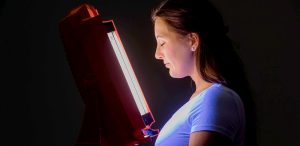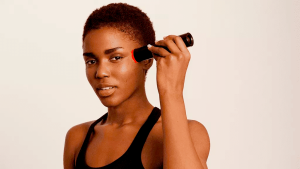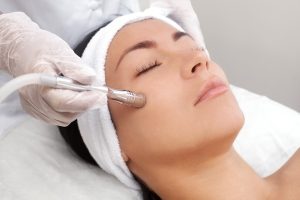Tanning is useful for both adults and children, but do not forget about the precautionary rules. After all, ultraviolet radiation not only gives a beautiful tan, improves immunity, and produces a “happiness hormone”, but can also cause serious ailments — skin cancer (melanoma) and cataracts. To be safe, you need to know what UV index is best for tanning. In this article, we will tell what is the UV index and which is good for tanning so as not to harm your health. We will also share safety tips to make your experience the best it can be.
What is the UV index?
Ultraviolet (UV) is one of the types of solar radiation, along with infrared. They are not visible to the human eye, not immediately felt, but nevertheless, affect us.
This important indicator will help you plan your activities to prevent excessive sun exposure. You should always take precautions against UV rays, such as using SPF, covering your body with clothing, and wearing sunglasses.
What affects the amount of UV index?
🌓 Times of the day
The level of radiation is affected by the thickness of the air through which the sun’s rays penetrate. The higher the sun rises, the higher the UV index becomes. It reaches its maximum from about 12 PM to 2 PM. The least ultraviolet radiation is at sunrise and at sunset.
☀ Season
In summer, the sun rises higher than in winter, and the level of UV radiation increases accordingly.
📊 Geographic latitude
The closer to the equator a place is, the higher the UV index is.
🌊 Earth’s surface characteristics
Surfaces have different reflective abilities. So, the earth can reflect up to 10% of ultraviolet radiation, and fresh snow — up to 80%. A sandy beach increases the overall level of UV radiation by 15%, and the foam on the crest of a wave increases by about 25%.
Best UV index for tanning
The world has adopted a unified system for measuring the UV index — this is a scale from 0 to 11+.

| UV index value | Precautionary measures |
| 0-2 | Special precautions are needed only for children and those who have sun allergies or diseases associated with photosensitivity (e.g. lupus erythematosus, erythema, atopic eczema, psoriasis, dermatitis). |
| 3-5 | Sunglasses, a hat, and SPF 15+ sunscreen (renewed every 2 hours) make it safe to stay in the sun for 30 minutes. |
| 6-7 | Clothing covering the body is added to the precautions from the previous paragraph; from 12 PM to 4 PM it is better not to appear in the sun. |
| 8-10 | You should hide in the shade and be sure to protect your head, shoulders, face, and neck with a wide-brimmed hat, body with clothing, eyes with glasses, and exposed skin with an SPF 30+ sunscreen; do not go out in the sun from 10 AM to 5 PM. |
| 11+ | Being in the open sun is a health hazard. |
Based on this, the best UV index for tanning is between 3 and 5. This means that the sun’s ultraviolet radiation is strong enough to cause skin damage, but not so hard that it immediately gives sunburn. Radiation in this range will help you create a base tan without the risk of burns or other skin damage.
However, be sure to wear SPF 15+ sunscreen and renewed it every two hours.
The safest time of day for tanning
Ultraviolet rays are most active when the sun is at its peak in the sky. This is between 10 AM and 4 PM. So, the safest time of day for tanning is in the morning, before 10 AM (ante meridiem — before noon). The sun is not as strong during these hours, so you are less likely to get burned.
If the morning hours don’t suit you, another time you can sunbathe is after 5 PM. While it may not give you that golden glow you’re after as quickly as a morning tan, you can still make it work.
Sunbathing after 5 PM can also be a good idea for those who are just trying to tan for the first time.

What are the risks of tanning?
There are several risks associated with indoor tanning, including:
- Skin cancer
UV radiation causes genetic mutations in skin cells that can lead to skin cancer. Skin cancer is the most common type of cancer in the United States [1]. It most often develops on areas of the body that are frequently exposed to the sun, such as the face, neck, forearms, and hands.
- Sunburn
The most common result of overexposure to UV radiation is sunburn, which can include skin redness, burning, and in some cases, fever or chills. To be on the safe side, stay out of direct light when the sun is at its peak and use sunscreen.
- Eye damage
The UV rays emitted from the sun can cause serious damage to your eyes, including cataracts, macular degeneration, and melanoma of the eye [2]. To protect yourself, use sunglasses.
- Premature aging
In the long run, too much exposure to the sun can cause premature skin aging, including wrinkles, age spots, and loss of skin elasticity. The sun also may cause discolorations in skin tone [2].
Who shouldn’t tan?
Some people may be more susceptible to skin damage from the sun. Factors affecting this include:
👧 Age: Younger skin is more susceptible to sun damage, and sun exposure during childhood or adolescence increases the likelihood of skin cancer [3].
🧑🏽 Skin type: Fair-skinned people are more prone to burns. If someone already has a natural tan, this may provide a small degree of protection against sunburn, but not enough to be safe.
📑 History of skin cancer: If someone in the family has had skin cancer before, sun exposure may increase the risk of developing this disease in the future.
Some people should avoid sun exposure entirely. These include those who have recently:
- Have undergone cosmetic procedures such as skin peeling or laser hair removal;
- Used skin care products containing chemical exfoliants such as salicylic acid;
- Have taken certain acne medications or used topical retinoids.
What areas of skin need the most protection from the sun?
The face, neck, chest, and back are the most vulnerable to sun damage, so it’s important to use sunscreen and protective clothing when spending time outdoors.
Sunscreen should be applied liberally to all exposed skin, including the face, neck, chest, and back. Be sure to renew it every two hours, or more often if you are sweating or swimming.

Ways to protect your skin during tanning
Because tanning requires long exposure to the sun, it always comes with some risks. Below we put some tips to follow for a person who wants to get a beautiful tan and at the same time not harm their skin.
- Use sunscreen
It is very important to apply sunscreen before any sun exposure, whether you are tanning or just walking. Choose a sunscreen with an SPF 15 at least and be sure to renew it every two hours or after swimming.
- Do not apply perfumes and aromatic oils to the body
Do not apply perfume when you are in the sun, as this can make your skin more sensitive to the sun’s heat and eventually cause burns.
- Maintain water balance
Drink at least 2 liters of water a day to prevent dehydration and dry skin. It can also help with nausea if you’ve been out in the sun for a long time.
- Limit your time in the sun
Try not to be in the sun during peak hours, usually between 10 AM to 4 PM. If you must be in the sun during these hours, take frequent breaks and stay in the shade as much as possible.
- Know your skin type
It is important to know how your skin reacts to sun exposure. If you have fair skin, you can burn easily and are at a higher risk of skin cancer. Be sure to take extra precautions when spending time in the sun.

- Check your skin regularly
It is recommended to regularly check the skin for changes. If you notice anything unusual, be sure to see a dermatologist.
By following these tips, you can protect your skin from harmful sun rays and get a tan without putting your skin at risk.
The verdict
The UV index is a measure of the level of ultraviolet radiation and an indication of the potential hazard to the skin. It ranges from 0 to 11, the higher the value, the higher the chance of damage to the skin and eyes.
For a comfortable tan that won’t damage your skin, the best UV index is from 3 to 5. However, remember to take precautions such as sunscreen and sunglasses. In addition, if you have fair or sensitive skin, sunbathe with care so as not to damage your skin.
It is also recommended to tan before 10 AM or after 5 PM. However, if you have a busy schedule and can’t do it at a certain time, the best way out for you is to tan with a special device or spray.
FAQ
🤓 What is the best UV index to tan?
The best UV index for tanning is considered to be between 3 and 5 since the ultraviolet radiation is not so strong that it immediately causes sunburn, so you can get a basic tan.
🔥 What are the risks of tanning?
The risks of tanning include skin cancer, premature aging, and sunburn. Be sure to wear sunscreen, and limit your exposure to UV rays to reduce the risk of these health problems.
☀ What is the best time of day to tan?
The best time of day to tan is in the early morning (before 10 AM) or late afternoon (after 5 PM) when the sun’s rays are not as intense. Be sure to wear sunscreen, and take breaks in between sessions to avoid overexposure.
References
- American Cancer Society. Cancer Facts & Figures 2022.
- Richard B Weller, Maximilian Mahrhofer, Wendy Davis, Shelly Gorman. Risks and Benefits of UV Radiation. — Curr Probl Dermatol. 2021;55:329-338. doi: 10.1159/000517642. Epub 2021 Oct 25.
- Karlijn Thoonen, Francine Schneider, Math Candel, Hein de Vries & Liesbeth van Osch. Childhood sun safety at different ages: relations between parental sun protection behavior towards their child and children’s own sun protection behavior. — BMC Public Health volume 19, Article number: 1044 (2019).





